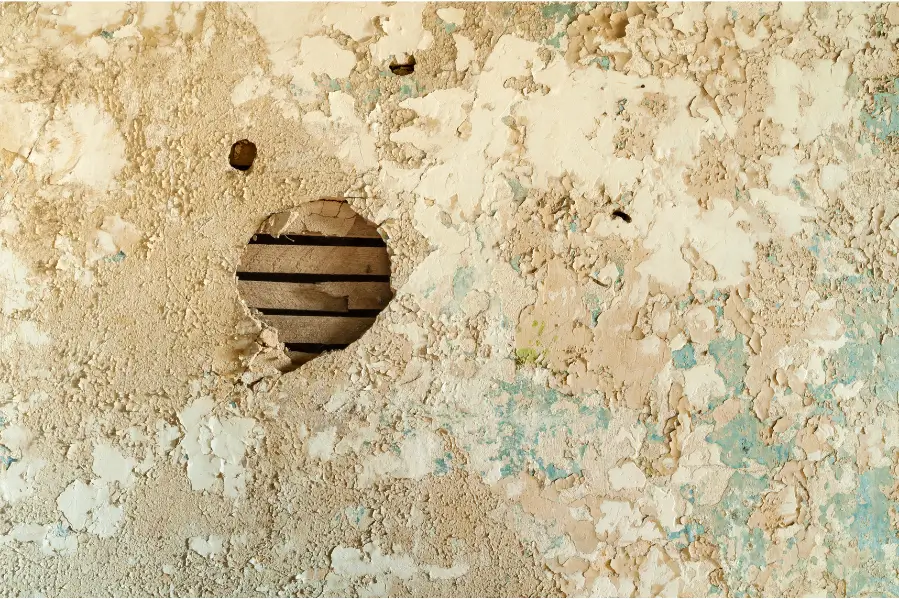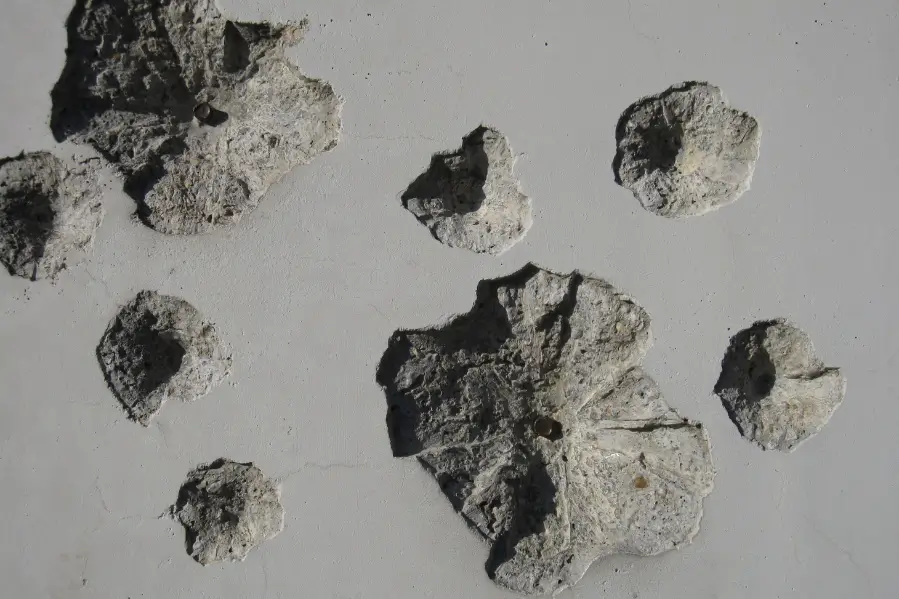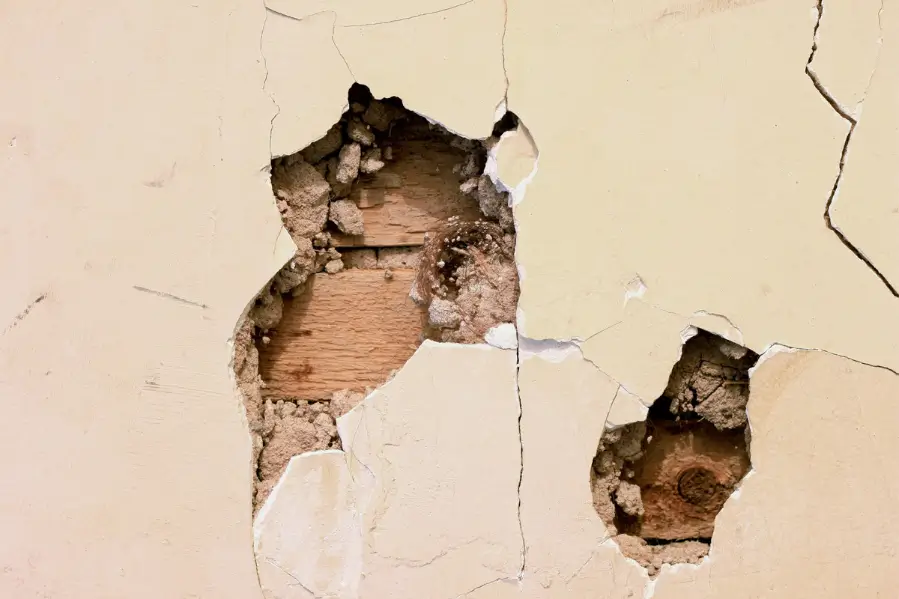Perhaps the holes in plaster walls are among the scariest tasks that anyone has when involved in DIY activities, but when the right tools and techniques are followed, it is not impossible to fix them. Once you have small cracks or large holes in your plaster, it’s going to restore your walls back to what they should be.
The type of filler and the level of repair also decide which one is suitable. For optimal results, always use according to the manufacturer’s instructions.
Here’s a step-by-step guide on how to repair small and big holes in plaster walls with a smooth and seamless finish.
How to Repair Small Holes in Plaster Walls

Small holes, such as those that have resulted from nails, screws, or minimal damage are easy to fix. Here is how you can do this;
Step 1: Gathering Your Tools and Materials
When fixing small holes in plaster walls, you will require:
- Spackling paste or joint compound
- Putty knife (2- to 3-inch works well on small holes)
- Sandpaper, fine-grit 120- to 150-grit
- Paint to match the color of the walls
- Primer (optional but recommended in order to obtain the best finish)
Step 2: Clean the Area
Clean the hole and the surrounding area before applying a repair material. Dust, dirt, and any loose plaster must be removed. This can be done using a dry cloth or brush. Cleaning the area ensures the compound will bind well on the surface.
Step 3: Fill the Hole
You put spackling paste or joint compound into the hole. Then you squeeze material into the hole, then smooth it out so it’s even with the wall. Hairline Crack Filler is designed for very fine cracks and holes in ceilings. Be very careful not to get any of the extra compound on the wall because you’ll have to sand this off.
Step 4: Let It Dry
Allow the compound to dry completely. You’ll let it dry up following the recommended times indicated by the manufacturer. With a small hole, it usually takes 1-2 hours to dry, considering the humidity and the product used.
Step 5: Sand the Area
Allow it to dry.With fine-grit sandpaper, lightly rub down the patched surface to acquire a smooth finish, blending with the rest of the wall. When done, wipe away dust with a clean, dry cloth.
Step 6: Priming and Painting
Fill holes with joint compound and allow it to dry according to the manufacturer’s instructions. Use a damp cloth to remove excess, feathering the edges so it will blend with the surrounding area.
Apply a primer layer over the sanded patched area before painting to ensure success. This primer does not just seal the repair but also makes the paint stick.
Paint the area using a matching color of the rest of the wall after the priming. If the patch size demands you do so, you might need to repaint the whole wall to make it look uniform.
How to Repair Large Holes in Plaster Walls

Nearly always, larger holes are those resulting from an accident or a structural failure. So, here is how you can fix a large hole on your plastered wall:
Step 1: Your Tools and Materials
Of course, for larger patches, you use more materials than patching smaller holes:
- Plaster patching compound or joint compound
- Mesh or plaster patch
- 4- to 6-inch putty knife for wider coverage
- Utility knife
- Middle and fine grade sandpaper
- Paint and primer
- Wooden lath, optional when the hole is deep
Step 2: Preparation of the Hole
The edges of large holes should be cleaned with a utility knife. Cut loose or crumbling plaster away; round off the edges of the hole; it will make patching easier and create a more even finish. If you expose wooden lath, you may need to reinforce it, although often, this stuff is still good enough to use as a base.
Step 3: Patching
If the hole is a few inches wide, use a patch. Hardware stores commonly have mesh or plaster patches that come in different sizes. These can often cover a larger hole with a solid surface on which the plaster compound can be applied.
For deep holes, first support the patch with a backing of sorts, such as a wooden lath or pre-cut piece of drywall as in drywall repair. Cover the mesh or patch completely over the hole.
Step 4: Apply the First Layer of Plaster
Apply a thin layer of plaster patching compound with your putty knife over the mesh. Use this to spread it out and a bit beyond the edges of the patch to feather it down to the surrounding wall. This doesn’t need to be smooth yet; just the first coat.
Let this layer dry according to the manufacturer’s instructions. (This is usually 24 hours.)
Step 5: Apply Additional Layers
Large holes usually require at least two or three layers of compound to build up a smooth repair. Once the first layer is dry, sand it lightly with medium-grit sandpaper to knock down any rough spots. Then you can apply the next layer, again extending the compound just a little beyond the old layer to feather it into the wall.
Repeat this process until the patched area is flush with the surrounding wall. Each layer should be thinner than the last, with more attention to smoothness as you go.
Step 6: Sand for a Smooth Finish
Once the last layer is dry, rub down the whole patch area with fine-grit sandpaper to ensure that it is even smooth. Do not rush in this stage; a surface finish would be important to ensure that the repair is blurred with the rest of the wall.
Step 7: Prime and Paint
Another good step is to apply primer over small holes and holes before painting. Primer will seal the plaster and give it an even finish. Paint over the patched area wholly, and you will appreciate how well the repair would blend with the rest of the wall.
If you need to apply it all over the wall, do so in such a manner that you will hardly notice a difference in the texture and color.
More Tips on How to Successfully Repair Plaster
There are a variety of tips for multiple types of repairs. The common ones include the following:
- Correct compound Use: For a small hole, the lightweight spackling paste will do the trick. For a bigger repair, use a joint compound or plaster patching compound.
- Feather the edges: When putting on any of the plasters or joint compounds, it is always spread just beyond the edges of the hole to merge it with the rest of the wall so that ridges or bumps are not noticeable.
- Texture: If your walls do possess a texture, for example, popcorn or knockdown texture, ensure the patch texture is compatible. Possibly you may find texture spray or have to concoct one by hand using a sponge or brush.
- Safety first: Sanding plaster often when working on older homes requires wearing a mask to avoid inhaling all that dust. Some older homes also contain lead-based paint; so, always be careful.
- Take your time: Rush can leave visible patches. Let the compound dry thoroughly before proceeding to the next step and make sure to sand each layer well for a smooth surface.
Professional Plaster Repair Services with Smart Remodeling LLC
When it comes to plaster wall repairs, we know that nothing surpasses the combination of quality materials and expert technique. If you’re uncertain about tackling the repairs on your own, it might reinforce your decision to hire professional services to ensure everything is done right.
Here in the Houston, Texas area, companies like Smart Remodeling LLC are our go-to for fixing any size hole or crack in plaster. Our team provides a wide range of services, utilizing only the best materials to make the walls look as good as new.
Whether it’s a minor touch-up or a significant repair, we provide a smooth, long-lasting finish that seamlessly matches the rest of your wall.
Conclusion
Holes in plaster walls, both small and large, are easy to repair. With the right materials, a bit of patience, and attention to detail, you do not have to call a professional to fix your walls. From tiny nail holes to damage, you can fix these and many more through the following steps so that your repair is invisible and long-lasting.
FAQs
What’s the difference between plaster and drywall?
The plaster is applied in several layers of thereat and lath while the drywall consists of large sheets of gypsum board. Since it’s more labor-intensive to repair plaster, it appears to have better durability along with better insulation as compared to drywall.
How long does plaster repair take?
That depends on the size of the hole. Well, for a small hole, repairs should be done in just a few hours. The bigger it is, the more than one layer of compound, and then you have to wait for it to dry, which takes a long time.
Can I use drywall compound on plaster walls?
Yes, however, for small holes in plaster, you may use drywall compound but for big repairs, it’s better to use plaster patching compounds or joint compounds designed especially for plaster.
Should I repair it, or should I simply replace it?
If the damage is minor, then it will suffice with just repairing. In cases where plaster is all cracked, crumbling, and generally in tatters, it might be best to replace it or have a professional do the job for you.






